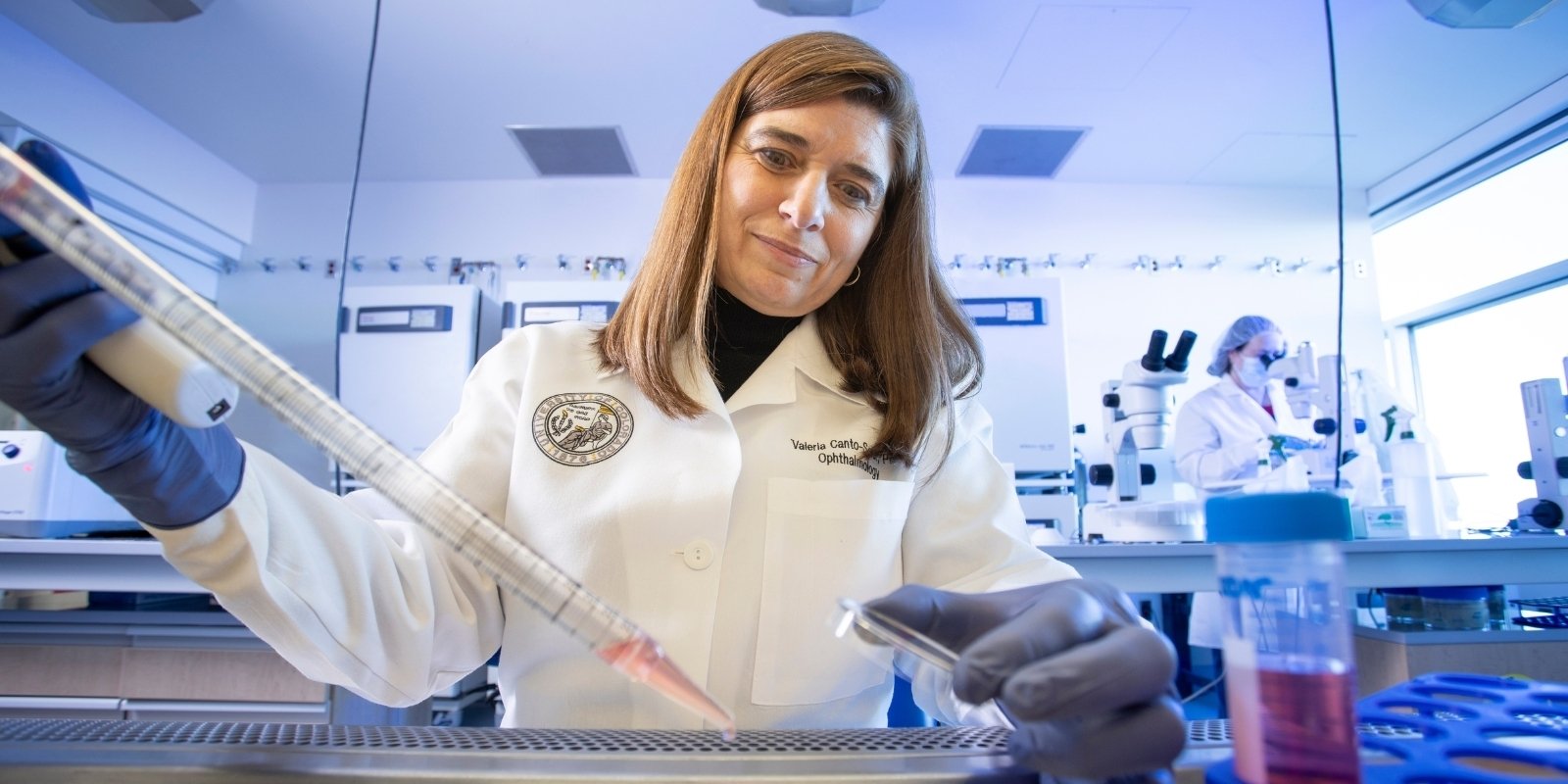For today’s generation of medical researchers, the need for speed in the scientific world was never more pronounced than it was in 2020. As society hid from a deadly virus, the race for a treatment went full-throttle, pinning some scientists in their labs nearly 24/7.
Now researchers at the University of Colorado Anschutz Medical Campus, with a new Center for Drug Discovery officially unveiled last month, can fast-track drug therapies all night long – and even go home and sleep while they’re doing it.
“It’s my sincere hope and belief that the installation of this equipment is going to be another really major step forward,” Chancellor Don Elliman said during a Sept. 23 event on campus announcing the center and its star centerpiece: a specialized robotic drug discovery imaging system.
Built by longtime corporate partner PerkinElmer and housed in the center’s Skaggs School of Pharmacy and Pharmaceutical Sciences building, the high-throughput, high-content screening system can do in minutes what would take one researcher hours to do.
Fast-tracking drug-therapy pipeline
The system, actually a custom-built suite of integrated robotic and imaging systems, is the only one of its kind in the Rocky Mountain Region, David Ross, PhD, pharmacy’s associate dean for research and graduate studies, told a group of campus leaders, researchers and other stakeholders at the ribbon-cutting ceremony.
The technology, which stands to advance education, innovation and partnerships for the campus, was made possible largely through a grant from The ALSAM Foundation, a longtime benefactor of the School of Pharmacy.

“If a researcher or a company came to us with a potentially new molecular target in a disease or a new functional mutation in a particular cancer, for example,” Ross said, “… we can screen chemical libraries of hundreds of thousands of potential new drugs very quickly using the new robotics and imaging,” he said.
“The idea is to bring new therapies to patients much more quickly and efficiently. That’s the overall goal of everyone working here at the Anschutz Medical Campus.”
‘Push the start button, and then go home’
Whether discovering the next coronavirus therapy or a treatment for Alzheimer’s disease, the technology, combined with his team’s expertise, can dramatically accelerate the generally long, time-consuming and expensive pre-clinical phase of drug discovery, Daniel LaBarbera, PhD, the new center’s founding director, said after the event.
“If you go to individual research labs on campus, on average, you will have two to six scientists in the lab, and you’ll see them all with these little things,” LaBarbera said, holding up a liquid-dispensing pipette. “And they’re doing this,” he said, methodically pumping the bulb at the top of the slim glass tube up and down with his thumb.
“We need to sleep. We need to eat. The robot doesn’t need to do that.” – Daniel LaBarbera, PhD, Drug Discovery Center director
“Let’s say it took them an hour. We have instruments that can stamp it in literally seconds.”
The sterile, HEPA-filtered system encased in plexiglass and centered around a robotic arm that tracks back and forth doing the jobs a researcher programs it to do, has a pipette head that fills 384 pipettes at once.
The robotic arm can do everything from dispensing drugs and cell mediums (disease models), lidding and de-lidding plates, spinning plates on a centrifuge, incubating assays and washing pipettes and Petri dishes for a next round. The system can run multiple experiments simultaneously.
“You could program your experiment, push the start button, and then go home,” one tour guide told participants during the unveiling event.

(Left to Right) Daniel LaBarbera, Chancellor Don Elliman and John Luck of PerkinElmer (happily) prepare for the ribbon-cutting. |
‘It won’t stop until it’s done’
“The other thing is, when you’ve got the human being doing this, and you’ve got all these instruments that are spread out in the lab and different places, the human has to carry the disease model to the various instruments and run it back and forth,” LaBarbera said. Sometimes, researchers even must ship experiments to different labs across the state.
The robotic system also eliminates human error, LaBarbera said, using manual pipette dispensing again as an example. “Depending on how much pressure you put on your thumb, you could have slight error because of that. The instrument uses a more precise method to control the liquid handling, so you increase efficiency and precision.”
Another benefit: Human beings need breaks; robots do not, LaBarbera said. “Like for me, I need coffee. We need to sleep. We need to eat. The robot doesn’t need to do that. We can program the robot and screen 100,000 compounds, and it won’t stop until it’s done.”
A step toward becoming drug-discovery hub
With the talent of the biomedical community on campus and the expertise at developing disease models for testing individual drugs, the possibilities for the future are great, LaBarbera and other campus leaders agreed. “Now they have the expertise to take that disease model and miniaturize it into a format that can screen hundreds of thousands of potential drugs rapidly.”
The center, also a valuable educational arm for the pharmacy school’s graduate-level drug discovery programs, offers resources and expertise beyond the initial screening phase.
“We help with prioritizing and validating lead drug therapies and providing feedback and expertise on optimization of those through medicinal chemistry,” said LaBarbera, a trained medicinal chemist whose lab’s expertise includes drug design, cancer biology, and in vitro and in vivo pharmacology.
LaBarbera’s aim is to become a drug discovery hub, working closely with CU Innovations and harnessing disease models for drug screening from all CU Anschutz research centers, the Fitzsimons Innovation Community and beyond.
“Our goal is to increase the number of investigational new drugs with the potential to make it to the clinic that were developed right here at CU Anschutz and in Colorado,” LaBarbera said. “We hope to have a great impact.”
.png)


